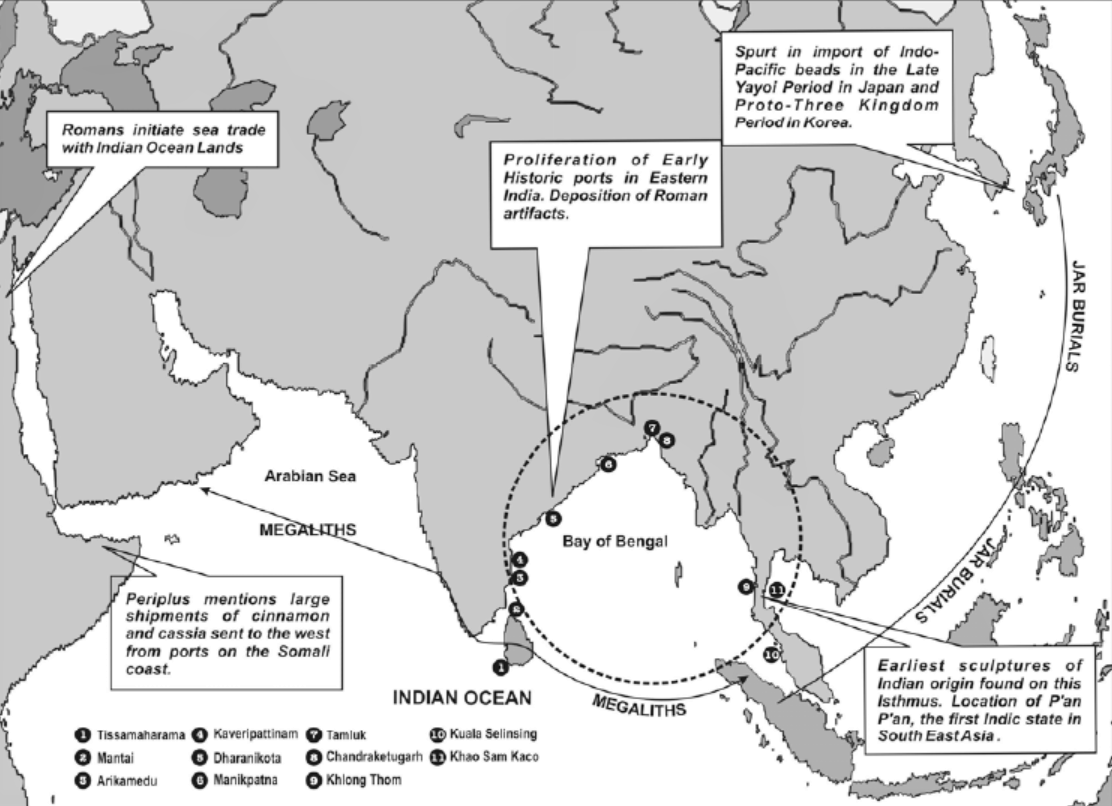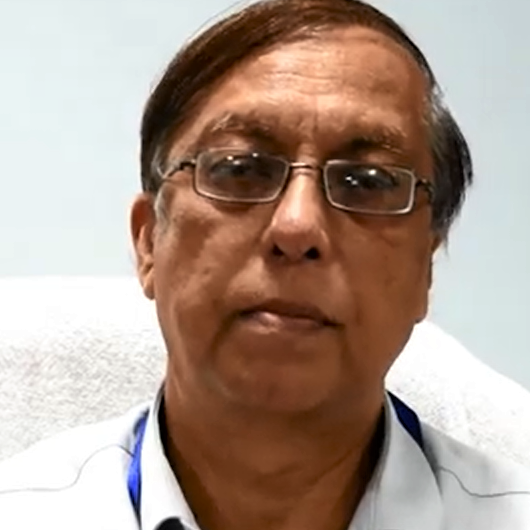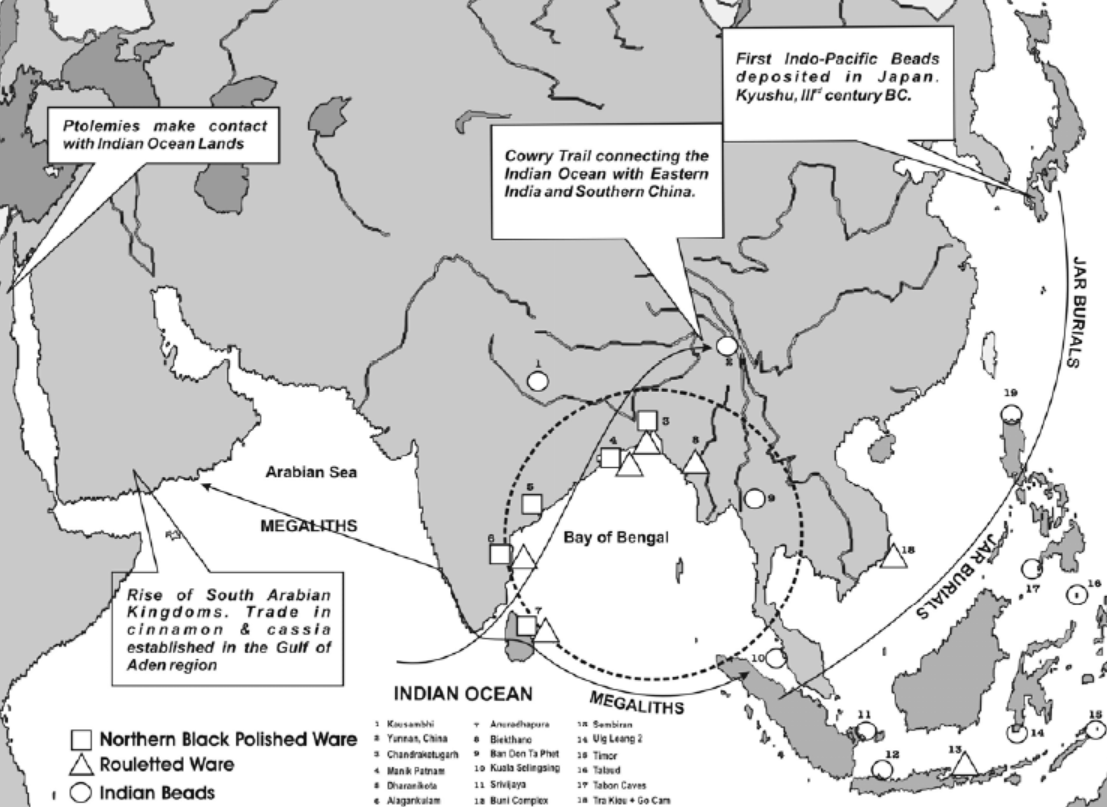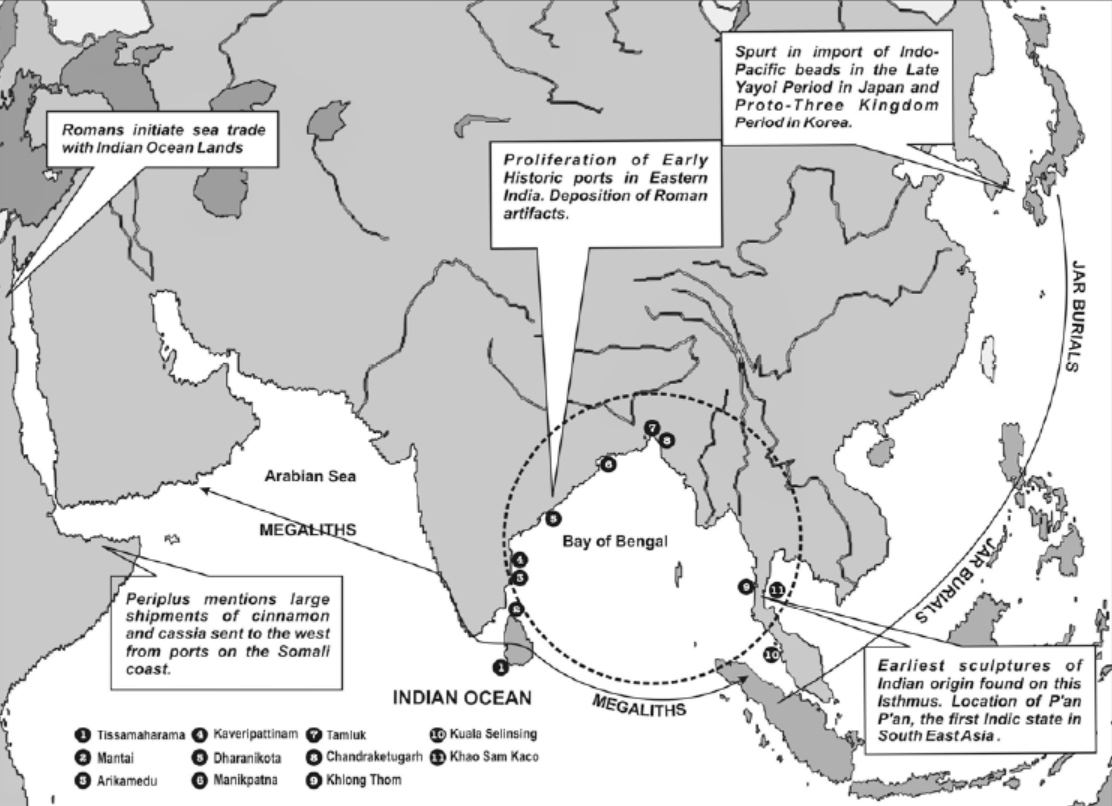THe Bay of Bengal Interaction Sphere (1000 BC – AD 500)
by Sunil Gupta
More about the BBIS (Bay of Bengal Interaction Sphere).

- Publication
- Self-publication, Academia.edu, 2018
- Published
- 2018
- Author
- Sunil Gupta
- Pages
- 10
- Language
- English
pdf 1.4 MB
Stricto sensu, the The BBIS comprises littoral tracts surrounding the Bay of Bengal. Its hinterland includes the eastern part of the Indian subcontinent (Sri Lanka, the Indian states of Tamil Nadu, Andhra Pradesh, Orissa, West Bengal, Assam and Bangladesh), and the western part of Southeast Asia (Burma, coastal Thailand, Peninsular Malaysia and Indonesian islands of Sumatra and Java). Major land and sea routes connecting various areas of the ‘hinterland’ passed through the Bay of Bengal.
The author’s conclusion opens new avenues for research and discussion: “Colonization of mainland Southeast Asia and parts of eastern India by Austroasiatic speakers and island Southeast Asia by Austronesian speakers saw the two major linguistic groups come together in the Bay of Bengal region. The Austroasiatic and Austronesian speaking people possessed abilities of a high order as agriculturists, metallurgists, foragers and sea farers. The colonising episodes were followed by trade episodes (cinnamon trade channels, cowrie exchange networks, Indo-Pacific bead distributions) in which old conduits were opened to movement of people and material fuelled by the acquisitive spirit. The exotic artefacts delineate lines of exchange. Stone and glass beads – especially Indo-Pacific beads — appear in mortuary complexes in both Austroasiatic and Austronesian zones and their distribution extends into Far East Asia. These prestige items are also to be viewed as serving a social function, linking aesthetics with status in chiefdom polities of Late Prehistoric Southeast Asia.”
Evolutive interaction, 500 BCE, 150 CE (author’s maps)
Tags: India, Bay of Bengal, Indian influences, Austronesian, Austroasiatic, prehistory, late prehistory, Southeast Asia, Early Southeast Asia
About the Author

Sunil Gupta
Sunil Gupta is an Indian archaeologist and researcher, and the Director of the Allahabad Museum, Allahabad, India.
His PhD thesis in 1998 (Deccan College Postgraduate Institute, University of Pune, India) was titled: ‘Roman Egypt to Peninsular India: Archaeological Patterns of Trade, 1st century BC – 3rd century AD’.
Editorial Member of the Centre for Research and Training in Archaeology, History and Palaeoenvironment (CHAPS), New Delhi, Sunil Gupta contributed to the founding of the Indian Ocean Archaeology Network, a web resource managed through the Western Australian University.



